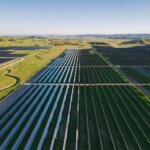November 17, 2025
The Power Beneath the Panels: How Pollinator Habitat Helps Feed America
At Arevon’s Big Muddy Solar Project, pollinator-friendly plants will help protect the land and America’s harvest.

Every third bite of food we eat exists because of animal pollinators. From apples and strawberries to alfalfa, pumpkins, and tomatoes, these small creatures — bees, butterflies, birds, and bats — help feed America. Yet across the country, pollinator populations are declining as natural habitats disappear.
At Arevon’s 124 megawatt Big Muddy Solar Project in Jackson County, Illinois, a new kind of land stewardship is taking shape. While the project will generate reliable American energy above the ground, it will also provide a safe, thriving home for pollinators, turning the land beneath and around the solar panels into a habitat that helps protect the soil and America’s important pollinator population.
Most people don’t realize that solar projects leave the majority of the land open for other uses. In fact, less than 10% of a project’s footprint is taken up by equipment. The rest remains open space. How is that possible? In a utility-scale solar project, steel posts called piles form the foundation for the racks that hold solar panels in place. These piles take up less than 5% of the total project area.
That means the land beneath and between the rows of panels can keep working, supporting vegetation that nourishes the soil, reduces erosion, and — at Big Muddy Solar — creates pollinator habitat that can help strengthen American agriculture.
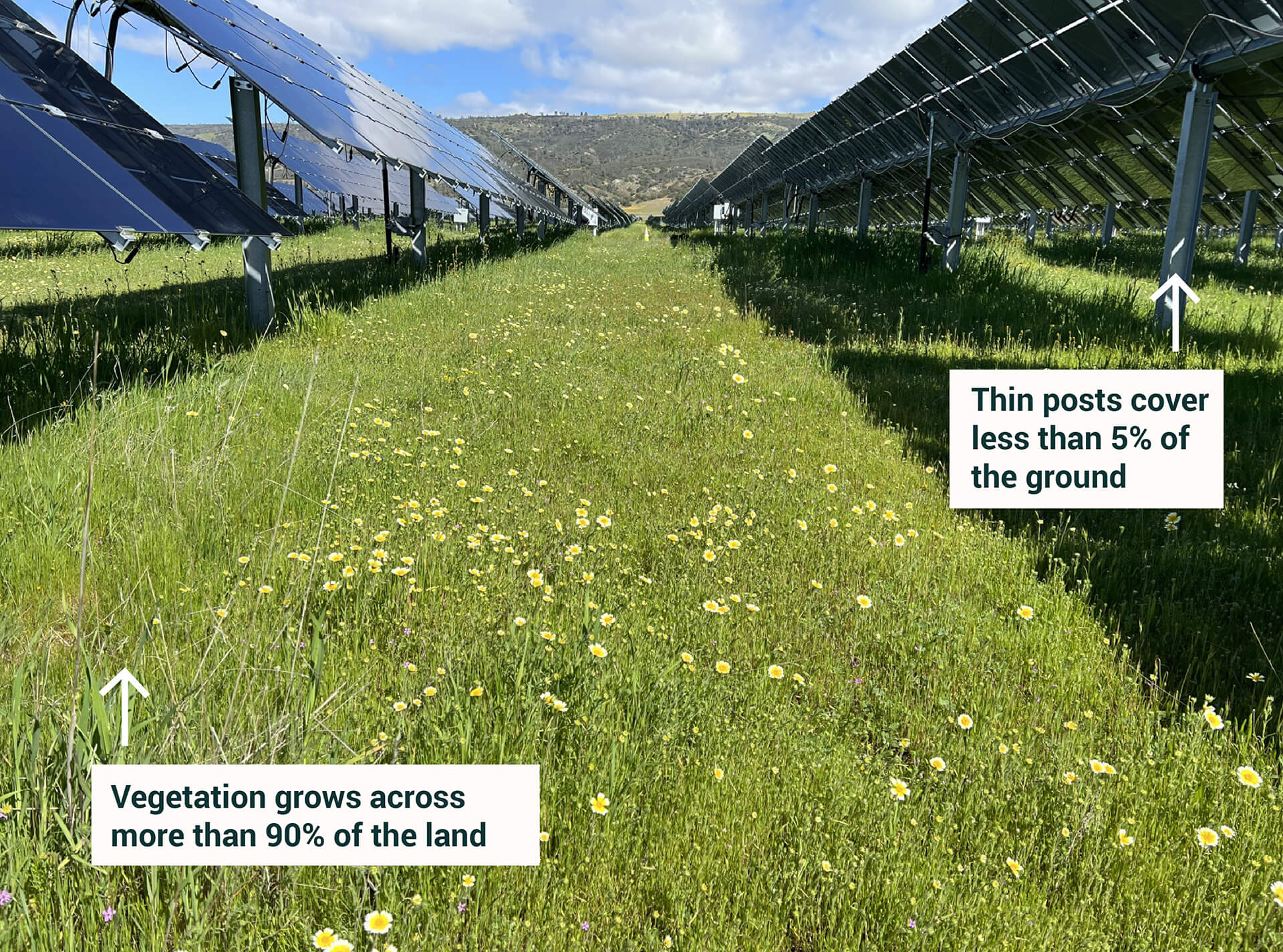
The Importance of Pollinators
Pollinators such as butterflies, bees, birds, and bats play a vital role in keeping America’s farms productive. They make it possible for plants to reproduce, which supports healthy harvests and strong rural economies. About three-fourths of the world’s flowering plants and one-third of our food crops rely on pollinators.
Pollinators contribute more than beauty to our landscapes; they strengthen the foundation of U.S. agriculture and food security. In fact, insect pollination adds more than $34 billion in value to American crops each year. Beyond the farm, pollinators help prevent soil erosion, improve water quality, and encourage healthy plant growth that keeps ecosystems resilient for generations to come.
Helping Pollinators Make a Comeback
Across the country, pollinator populations are struggling. Many species have seen steep decline. The number of managed honeybee colonies in the United States has fallen from about five million in the 1940s to roughly 2.7 million today. Over the past two decades, monarch butterfly numbers have dropped by more than 20% — a loss of one out of every five butterflies observed since 2000.
One major cause is the loss of feeding and nesting habitats. That’s where projects like Big Muddy Solar can make a difference. By planting native grasses and wildflowers across acres of open space, Arevon is restoring the kind of habitat pollinators need to thrive.
A five-year Argonne National Laboratory study found that restored solar sites can see up to a twenty-fold increase in native bee populations in the area around the projects, boosting pollination for nearby farms. Researchers concluded that these projects “provide support for solar-pollinator habitat as a feasible conservation practice to safeguard biodiversity and increase food security in agricultural landscapes.”
Big Muddy Solar is one example of how responsible energy development can give back to the land, allow the ground to rejuvenate, and provide supportive habitat for critical species.
What Will Be Growing Under the Panels
At Big Muddy Solar, Arevon is preparing to plant vegetation carefully selected to support pollinators while strengthening the land itself. Working with plant and soil scientists, the team designed a seed mix of low-growing perennial grasses and flowering plants that will stabilize soil, inhibit invasive species, and provide a lasting habitat for bees, butterflies, and other pollinators.
Each species was chosen for its durability, diversity, and ability to thrive in the southern Illinois climate, balancing pollinator value with stormwater absorption and soil health. Once planted across the entire site, this mix will take root across approximately 580 acres of leased land, creating a stable, protected habitat that will endure for decades.
The seed mix for Big Muddy includes:

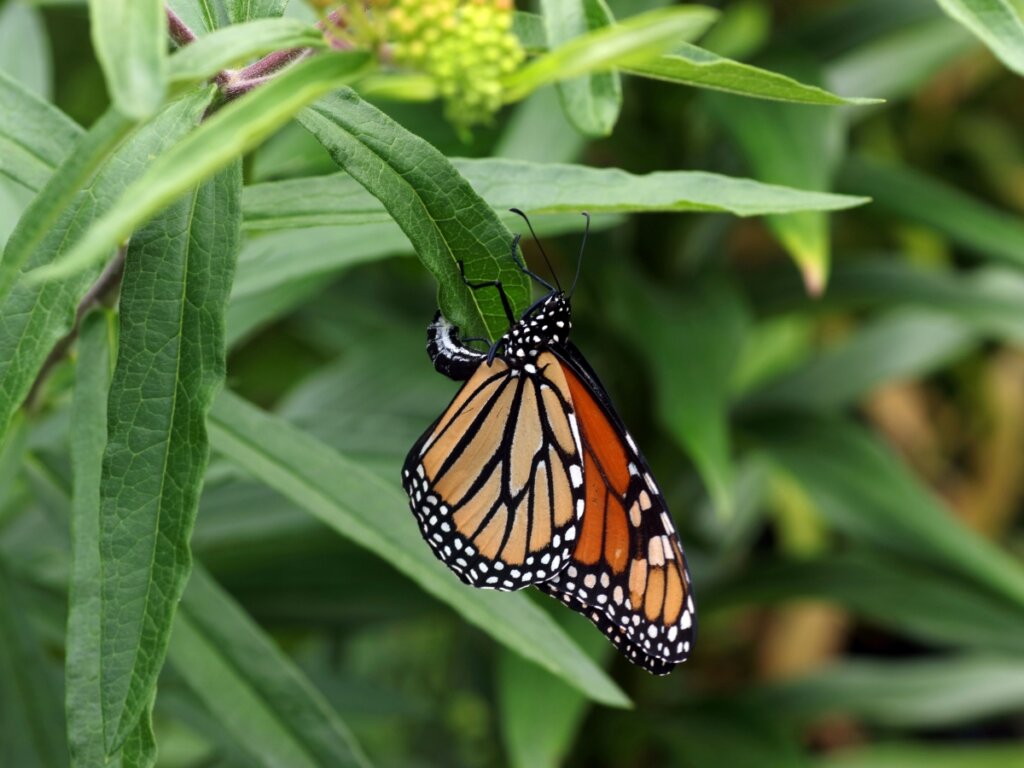
Did you know that monarch caterpillars are entirely dependent on milkweed as their sole food source? Millions of monarch butterflies also migrate up to three thousand miles each year, across multiple generations!
The vegetation was selected to bloom at different times throughout the year, ensuring continuous food sources and shelter for pollinators as the habitat matures.

At the end of the project’s lifespan, the landowners can decide how best to use the land for their family’s needs — whether all or a portion is used for continued habitat conservation, farming, continued solar use, or another use.
Community Benefits of Big Muddy Solar
While the pollinator habitat will provide lasting local environmental value, the Big Muddy Solar project will also deliver significant, long-term economic benefits to the local community.
Previously known as the Campbell Solar Project, Big Muddy Solar was renamed after the river that winds through Jackson County. Its logo even features the outline of Murphysboro’s legendary Big Muddy Monster, a nod to local pride and history.
Representing more than $198 million in private investment, the project will generate reliable American energy while strengthening the local economy. It’s expected to create about 250 construction jobs, support local suppliers and contractors, and bring millions in new tax revenue to the community.
Over the life of the project, Big Muddy Solar will contribute:
- $5.9 million in revenue for School District #196
- $3.1 million in revenue for Jackson County
- $12.6 million in total tax payments to Jackson County
Construction on Big Muddy Solar is underway, and the project is expected to be in commercial operation later in 2026. Once operational, the project will continue to provide direct local jobs and spur approximately $1.25 million in increased economic activity each year for the County.
Big Muddy Solar represents more than an energy project — it’s an investment in the people, schools, and services to help keep Jackson County strong.
Arevon’s Commitment to Land Stewardship
Protecting and preserving the natural character of each project site is central to Arevon’s approach to energy development. Across the company’s portfolio, every solar and energy storage project is designed with respect for the land and the people who depend on it.
At Big Muddy Solar and other projects nationwide, Arevon partners with local experts to create site-specific vegetation plans that improve soil health, restore native habitat, and support the communities where projects are built. These efforts are part of Arevon’s broader commitment to responsible land use — ensuring that the land remains productive, protected, and ready for future generations.
The Arevon team is currently evaluating opportunities for sheep grazing on seven new sites and has active grazing programs at four operating projects, helping maintain agricultural production alongside energy generation. Biodiversity protection measures are in place across 14 operating projects, and pollinator-friendly habitats are being developed at three sites under construction to help support local pollinator populations. These numbers represent the program as it stands today, and we are working to expand Arevon’s land stewardship efforts across more sites each year.
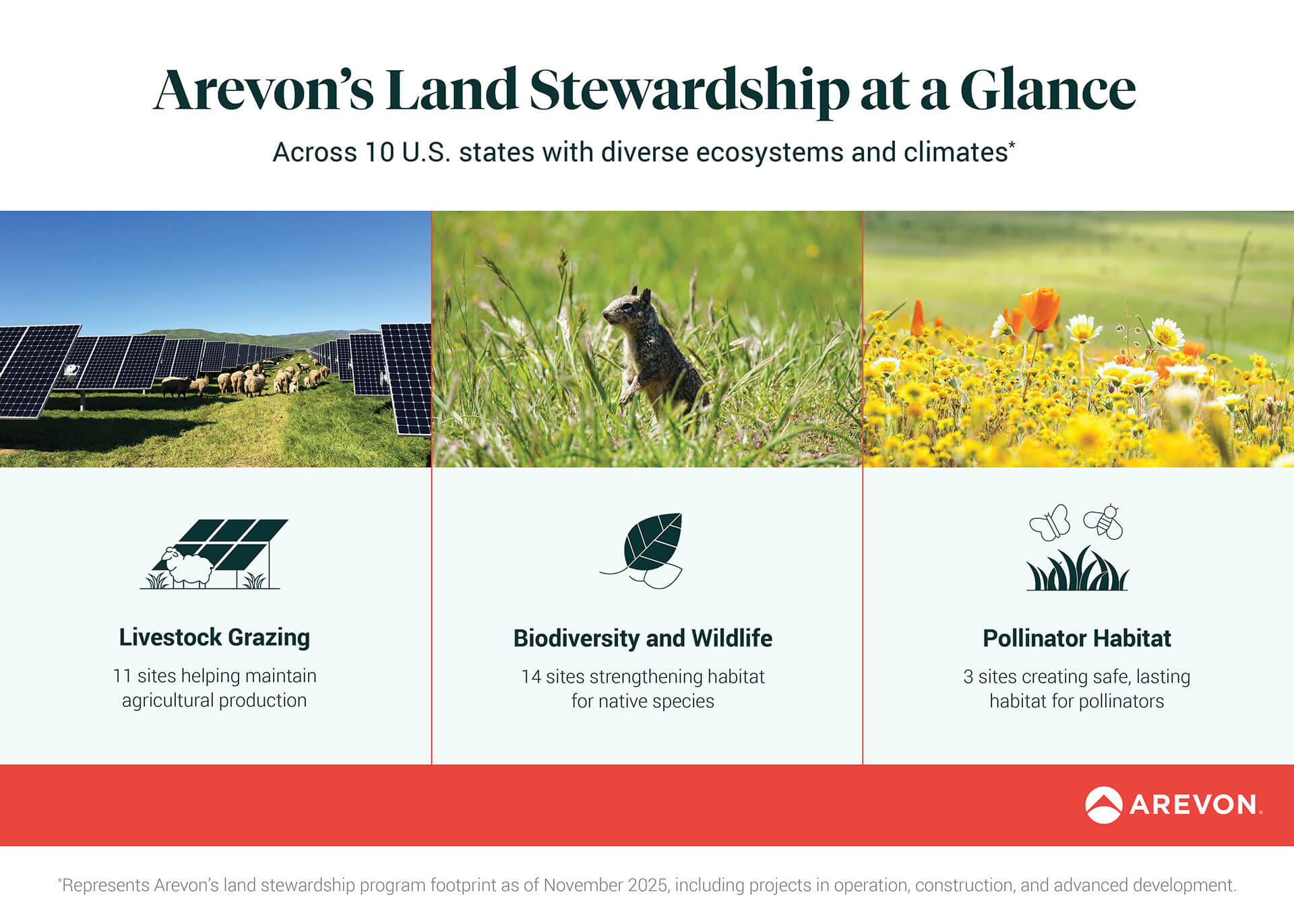
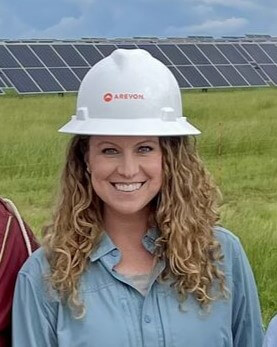
As Arevon’s Director of Sustainability Tiffany Buck puts it:
“When the land rests, life returns. Through thoughtful land management and long-term partnerships, Arevon is helping make sure that both the energy we build and the land beneath it will continue to work for America’s future.”
This is Arevon
Follow us on LinkedIn for more stories of how we’re powering progress.


